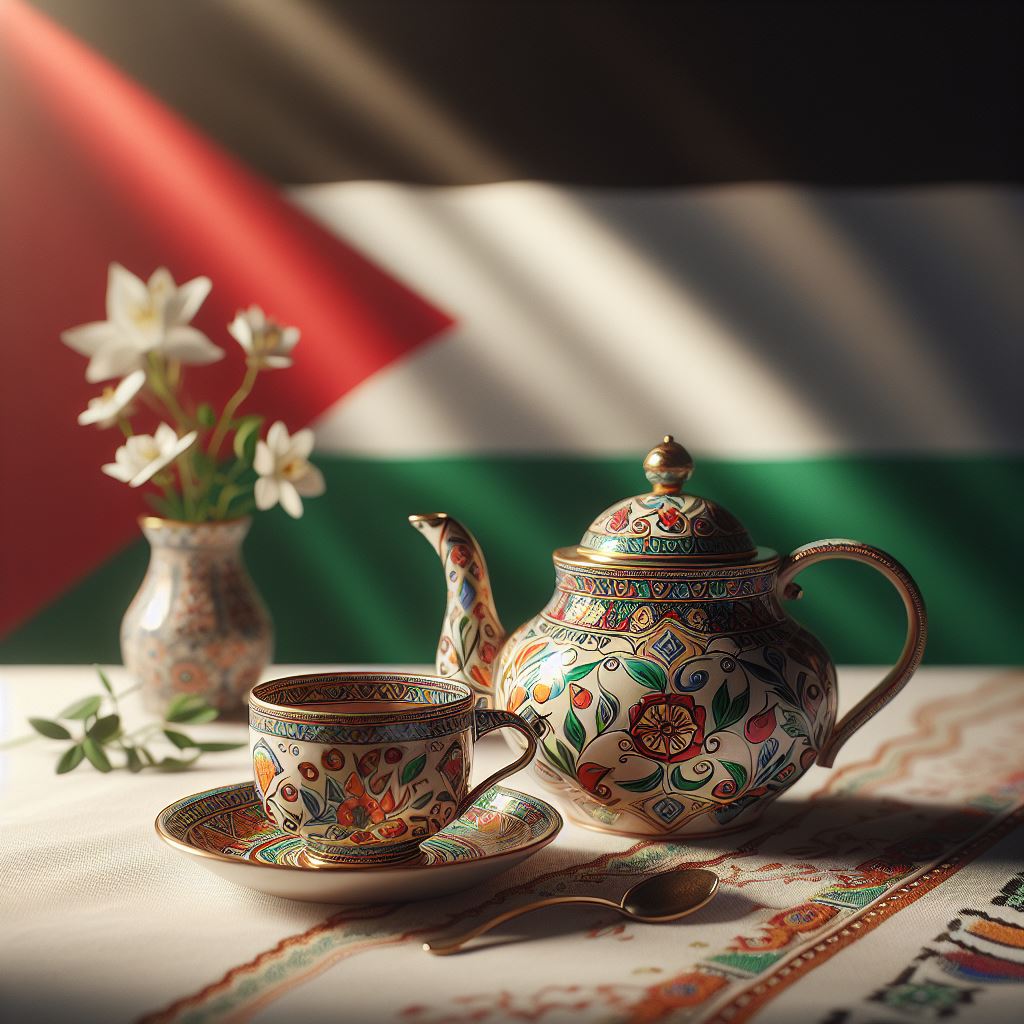Welcome to the aromatic world of burnt rice tea, a traditional Madagascan beverage known locally as Ranovola. This unique tea, with its smoky and slightly caramelized flavor, is a testament to the resourcefulness of Madagascar’s culinary culture. It’s a perfect example of how a simple mistake, like burnt rice, can turn into a delightful treat!

‘Ranovola’ Madagascan Burnt Rice Tea (with a twist)
The story of burnt rice tea, or ‘Ranovola‘ Madagascar tea, was born from the bottom of the rice pot. And for the Malagasy people, the crusty bottom layer of cooked rice wasn’t just an inconvenience—it was the beginning of something beautiful! It turns out, the Madagascans not only discovered a new delicious variety of tea, but also an excellent way to use up leftover burnt rice!
Why Burnt Rice Tea Emerged in Madagascar?
Apparently, Ranovola emerged as a clever answer to two prevalent issues in Madagascar: the difficulty of cleaning the crusted rice pot and the necessity to boil local water sources before consumption. By boiling water with the leftover bits of rice, not only was the water purified, making it safe to drink, but the pot was also cleaned, conserving precious water resources.
The resulting liquid, known as “money water” or Ranovola in Malagasy, takes on a golden hue and a mildly toasted flavor. This flavor can also be adjusted according to personal preference, ranging from subtle to robust.
Ranovola Health Benefits?
In addition, this tea is thought to possess very specific health benefits! Apparently The Madagascan medical faculty actually recommends this tea to its people for its gastric benefits. Due to the electrolytes from the rice, Ranovola is believed to have anti-diarrheal properties, helping to prevent dehydration. Furthermore, it’s thought to help with heartburn, for those Madagascan chilli fanatics!
Discover more Soothing Teas for Gastritis Relief: The Ultimate Guide for Your Stomach


The Bloom’s Tea ‘Twist’:
You might be wondering what the ‘twist’ is? Well, for this recipe, I have taken the traditional tea of Madagascar one step further, taking inspiration from Japanese genmaicha tea. Similarly to genmaicha tea, which uses brown rice and green tea, I have combine the toasted jasmine rice from Ranovola with the richness of loose leaf black tea.
Personally, I find this infusion creates a richer taste, which also satisfies that caffeine craving! If possible, you can even opt for a Madagascan sourced black tea for a real authentic experience and taste. I would suggest something like Nature Madagascar’s black tea, sourced from the Sahambavy village in the centre of Madagascar.
How to Make Madagascar Burnt Rice Tea
Firstly, to embark on this Madagascan tea-making adventure, you’ll need a few very simple ingredients. My recipe includes black tea for a richer taste, however, you can leave out the black tea if you would prefer to keep it strictly traditional (and caffeine-free). Here’s what you’ll need:
Ingredients:
- 1 cup of jasmine rice
- 2 tablespoons of loose-leaf black tea (opt for Madagascan tea if you can find it)
- 4 cups of water
- Optional: honey or sugar for sweetness
Equipment:
- A medium-sized pot
- A tea strainer or infuser (or find out How To Strain Tea Without a Strainer: 7 Easy Methods)
- Serving cups
Step-by-step Recipe:
1. Toasting the Rice:
- Rinsing: First of all, begin by thoroughly rinsing 1 cup of jasmine rice under cold water. Continue until the water runs clear, removing excess starch which can affect the tea’s clarity and taste.
- Toasting: Heat a medium-sized pot over medium heat. Once hot, add the rinsed rice. Unlike typical rice based foods, no oil is needed as the rice’s own starches will aid in the toasting process.
- Monitoring: Keep a watchful eye on the rice, stirring it constantly to ensure even toasting. You’re aiming for a golden brown color, akin to the hue of autumn leaves. This usually takes about 8-10 minutes.
- Cooling: Once toasted to perfection, remove the pot from the heat. Transfer the rice to a cool dish to stop the cooking process and prevent over-toasting.

2. Brewing the Burnt Rice Tea:
- Boiling Water: In the same pot used for toasting, bring 4 cups of water to a rolling boil. This is crucial for extracting the full flavor from the rice and tea leaves.
- Adding Ingredients: Gently add the toasted rice to the boiling water, followed by 2 tablespoons of loose-leaf black tea. If you have access to Madagascan tea, it will add an authentic touch. You can also use tea bags if you prefer, but this may affect the overall quality and taste of the burnt rice tea.
- Simmering: Turn down the heat to a gentle simmer. This allows the water to infuse with the smoky richness of the rice and the robustness of the tea leaves. Let this simmer for 10-15 minutes.
- Infusing: The key to a great Ranovola is patience during the infusion. Allow the tea to steep until the water takes on a deep amber color and the aroma fills your kitchen.

3. Straining and Serving:
- Straining: Use a fine-mesh tea strainer or infuser to separate the rice and leaves from the liquid. This step ensures a smooth, enjoyable tea without any gritty texture.
- Sweetening: While the tea is traditionally enjoyed without sweeteners, you can add honey or sugar to taste. This should be done while the tea is still warm to ensure proper dissolution.
- Serving: Pour the strained Ranovola into pre-warmed serving cups. This keeps the tea at an optimal temperature, enhancing the drinking experience.
- Drink it cold (optional): If you prefer a cold and refreshing beverage instead, feel free to cool it in the fridge and then serve over ice for an iced alternative!

Enjoy Your Traditional Madagascan Burnt Rice Treat!
Finally, take a moment to appreciate the labor of love that went into making this traditional beverage. Each sip is not just a taste but a journey through the heart of Madagascar’s tea culture. So sit back, relax, and savor the rich, smoky flavors of your homemade burnt rice tea.
For me, I find ranovola pairs wonderfully with light snacks. For example, try it with some crispy biscuits or flaky pastries for a truly delightful tea time experience. Furthermore, if you want to create that truly authentic experience, you could experiment with some traditional foods from Madagascar. It’s common practice for Malagasy people to eat meals like meat stews with rice, yams, sweet potatoes, and green vegetables. Check out some the most popular foods of Madagascar for more info.

Conclusion
There you have it, a simple yet unique way to enjoy the rich flavors of Madagascar right in your home. So next time you find yourself with some leftover burnt rice, remember that a delicious cup of Ranovola is just a few steps away. Go wild and dive into the diverse world of tea and let your taste buds travel to the heart of Madagascar!





Leave a Comment